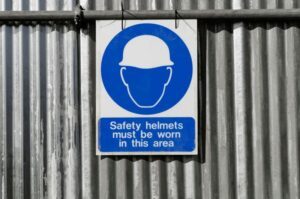Legislation and guidance
An act with real impact: the Health and Safety at Work etc. Act 1974
SHP hears from Adam Clarke at Praxis42 who provides an overview of the Health and Safety at Work and examines its impact over the years.
The time has come to talk about one of the big ones: the Health and Safety at Work etc. Act 1974 (HASAWA). It’s a fact that this single act has done more to improve workplace safety and employee health over its (almost) 50-year existence than any other. All employers must comply with the Act. There is only one notable exemption, the Secretary of State for Defence can claim exemption for the MOD, but this has been very rarely exercised.
The beauty of the way the Act was written has enabled businesses and organisations to innovate and develop without the need to constantly change it.
It’s easy to look into the statistics and see its impact. If we compare the number of fatal injuries to employees between 1974 and 2021/2022, the figures show a staggering drop of around 90%, with 81 employee deaths reported in this latest year. Non-fatal injuries and days lost to work-related accidents also show significant reductions.
Although these aren’t direct comparisons as the numbers are adjusted to reflect factors such as the changes to reporting requirements, it still shows the effect that this Act continues to have. Let’s take a look at how this Act has changed workplace health and safety so greatly.
Supporting legislation
The Act is a framework of rules designed to create a safe working environment. As a primary piece of legislation, it’s supported by subordinate legislation which looks to focus on particular work environments, activities, processes or on specific aspects of health and safety.
Between the Act and the subordinate legislation, every employer has details of the steps they must take to keep their employees (including freelancers and contractors) and visitors safe while in the workplace.
Responsibilities of an employer

Credit: Alamy Stock
At this point, the scene is set for me to succinctly summarise the Act and your responsibilities. However, the Act is necessarily detailed, so any summary (including this one) will leave out many important points. I strongly advise you to read the Act for yourself, even as just a refresher to ensure you’re still compliant.
But with the above caveat, these are the key points:
- All employers must have a Health and Safety Policy. If you have more than five employees, this must be written down
- Management must take responsibility for ensuring the Policy is followed, through working procedures designed to protect everyone
- Employers must appoint a competent person to meet their health and safety duties
- Risk assessments and inspections must be regularly carried out on premises, equipment and processes
- Employers must provide a workplace that is safe to work in, and a safe system of work (including all relevant training and Health and Safety Awareness training)
- Employees must be provided with adequate facilities for their welfare, such as drinking water, toilets and first-aid supplies
- Employees must be properly informed about workplace hazards, and provided with adequate training, supervision and instruction. Any training must be provided free of charge and during working hours. (Many companies can provide this training for employees, often with the courses available online)
Employees’ responsibilities

Credit: Alamy Stock
Of course employees have their part to play too, being expected to play an active role when it comes to health and safety in the workplace, by:
- Following and adhering to the training provided by an employer
- Taking reasonable care of their own and other people’s health and safety in the workplace
- Reporting all incidents and concerns to a responsible person
- Working with the employer to create a safe working environment
As always, the Health and Safety Executive (HSE) is here to help, with some helpful (purchasable) posters and (free) leaflets that summarise every employee’s responsibilities.
Reasonably practicable
One thing to bear in mind is that the key to your duties as an employer hinges on the fact that any measures you take must be ‘reasonably practicable’. This qualifier means the steps you take will be specific to your workplace rather than defined in the Act itself.
This enables employers to assess and evaluate the risks and the costs (in time, trouble or actual cost) to eliminate or control the risk to an acceptable level. For example, it might be impossible to remove all risks from the workplace or prohibitively expensive, but it would be ‘reasonably practicable’ to train employees and ensure risks are regularly assessed and evaluated.
To help further guide employers there are Approved Codes of Practice (ACOPs) and Guidance Notes published by the HSE, which should be taken into account in the decision-making process.
Enforcing the act
 The Act also saw the creation of the HSE itself, which as you know, along with local enforcing authorities, is responsible for regulating and enforcing health and safety legislation.
The Act also saw the creation of the HSE itself, which as you know, along with local enforcing authorities, is responsible for regulating and enforcing health and safety legislation.
As a general rule, the HSE conducts inspections and enforcement in construction and engineering organisations, whilst (for example) the Local Authority Environmental Health Officer would do the same for offices, hotels and shops.
In order to ensure compliance, these bodies are granted a range of powers which enable them to enter and inspect a site unannounced and:
- Investigate and check potential breaches
- Inspect documents and make copies
- Dismantle and remove equipment
- Take samples of substances
- Seek assistance from staff, enforcement agencies and the police
- Question employees and employers under caution
The penalties for non-compliance range from Prohibition and Improvement notices through to fines and imprisonment in serious cases. These penalties are understandably severe when you consider a worst-case scenario.
Changing perspective
With this talk of legislation, compliance and penalties, I think it’s easy to forget that the Act is a piece of people-first legislation. When it was first introduced in 1974, it was commonly regarded primarily as a series of hoops to jump through in order to avoid prosecution, rather than as a way to protect people as they went about their work.
In the half a century it’s been with us, we’ve seen a big shift however. Now the aims of the Act are understood and embraced, with most employers understanding that keeping employees safe is not only the right thing to do, but it’s good for business too. A safe, well-maintained work environment not only creates a much better place to work, but also helps to attract the best talent to work in it. And from a customer-facing perspective, having an accredited H&S management system such as ISO:45001 could be a differentiator when competing for business.
What of welfare?
 The world has changed a great deal in the last fifty years. Where, how and when we work have all seen massive shifts since the Act first came into being, and so has the way we think about health and safety.
The world has changed a great deal in the last fifty years. Where, how and when we work have all seen massive shifts since the Act first came into being, and so has the way we think about health and safety.
As I mentioned in an earlier piece about First Aid Regulations, the mental health of employees should be considered in as much detail as their physical wellbeing. Although not specifically mentioned in the Act, section 2 (1) does state that:
“It shall be the duty of every employer to ensure, so far as is reasonably practicable, the health, safety and welfare at work of all employees.”
It seems to me that ‘welfare’ should certainly include mental health, whether that’s work pressures (such as hazardous environments or deadlines/targets) or simply external pressures (such as the post-pandemic living crisis) which manifest themselves in the work environment.
In the same way that employers have embraced the physical side of the Act, we should now be taking the very same steps to safeguard the mental health of employees. The HSE reported that in 2021/2022, around half of all cases of self-reported work-related ill health were attributed to stress, depression or anxiety. At 2,750 cases per 100,000, this is an increase over pre-pandemic levels and a sign that mental welfare is something we must continue to include in all assessments, even if the Act does not state it implicitly.
An act with real impact: the Health and Safety at Work etc. Act 1974
SHP hears from Adam Clarke at Praxis42 who provides an overview of the Health and Safety at Work etc. Act 1974, and examines its impact over the years...
Safety & Health Practitioner
SHP - Health and Safety News, Legislation, PPE, CPD and Resources Related Topics
New flexible working legislation – what does it mean?
Protection for Everyone – SHP launches inclusive PPE campaign
Investment needed to prevent future “economically inactive” workers, IOSH warns



 The Act also saw the creation of the HSE itself, which as you know, along with local enforcing authorities, is responsible for regulating and enforcing health and safety legislation.
The Act also saw the creation of the HSE itself, which as you know, along with local enforcing authorities, is responsible for regulating and enforcing health and safety legislation. The world has changed a great deal in the last fifty years. Where, how and when we work have all seen massive shifts since the Act first came into being, and so has the way we think about health and safety.
The world has changed a great deal in the last fifty years. Where, how and when we work have all seen massive shifts since the Act first came into being, and so has the way we think about health and safety.
Good article.
Local authorities do not enforce health and safety in hospitals, although they do in hotels, perhaps that’s what the author intended?
Thanks Patrick – yes, we’ve amended now. Pleased you like the piece.
I would agree an excelent article (with the amendment)
its good to remind people to go back to basics every now and again.
PPE link is the MH one instead.
Excellent article from SHP, I agree that ‘welfare’ should certainly include mental health of the workforce, post pandemic.
The difference between the “letter of the law” and acting in the “spirit of the law”.
Work-stressors, fatigue, absence of Work Exposure Limits and a Right to Disconnect outside of work hours signed away in too many employment contracts ending in “and anything else” undermining employees right to expect a reasonable “Duty of Care” by employers in 21st ‘C’.
Personally I think the rot started when people became solely Human Resources like, you know, the organic production-line more concerned about CRM than in-house Wellbeing !?
Very little critical impact analysis – nothing that is not common knowledge already. Mental Health comes under the auspices of HSE enforcement, the only problem here is that Mental Health is subjective, and HSE is not very proactive in their enforcement of Health matters. Health and Social Care Act 2012 states that Mental Health needs to be given the same parity as all physical health. See https://www.centreformentalhealth.org.uk/parity-esteem . Practitioners need to be more holistic in their approach.
I think that ‘health’ always covered both physical and mental health because that is the literal meaning of the word. The fact that this was not generally recognised until much later does not mean that that was not the case. In the civil law the duty of care of an employer to protect against damage to mental health was recognised from at least the 1970s.
Again an article that doesn’t make mention of the pivotal role that Health and Safety Representatives have played in implementing health and safety in the workplace and changing employers perceptions of why the HASAW exists in such that it’s there to help not penalise employers.